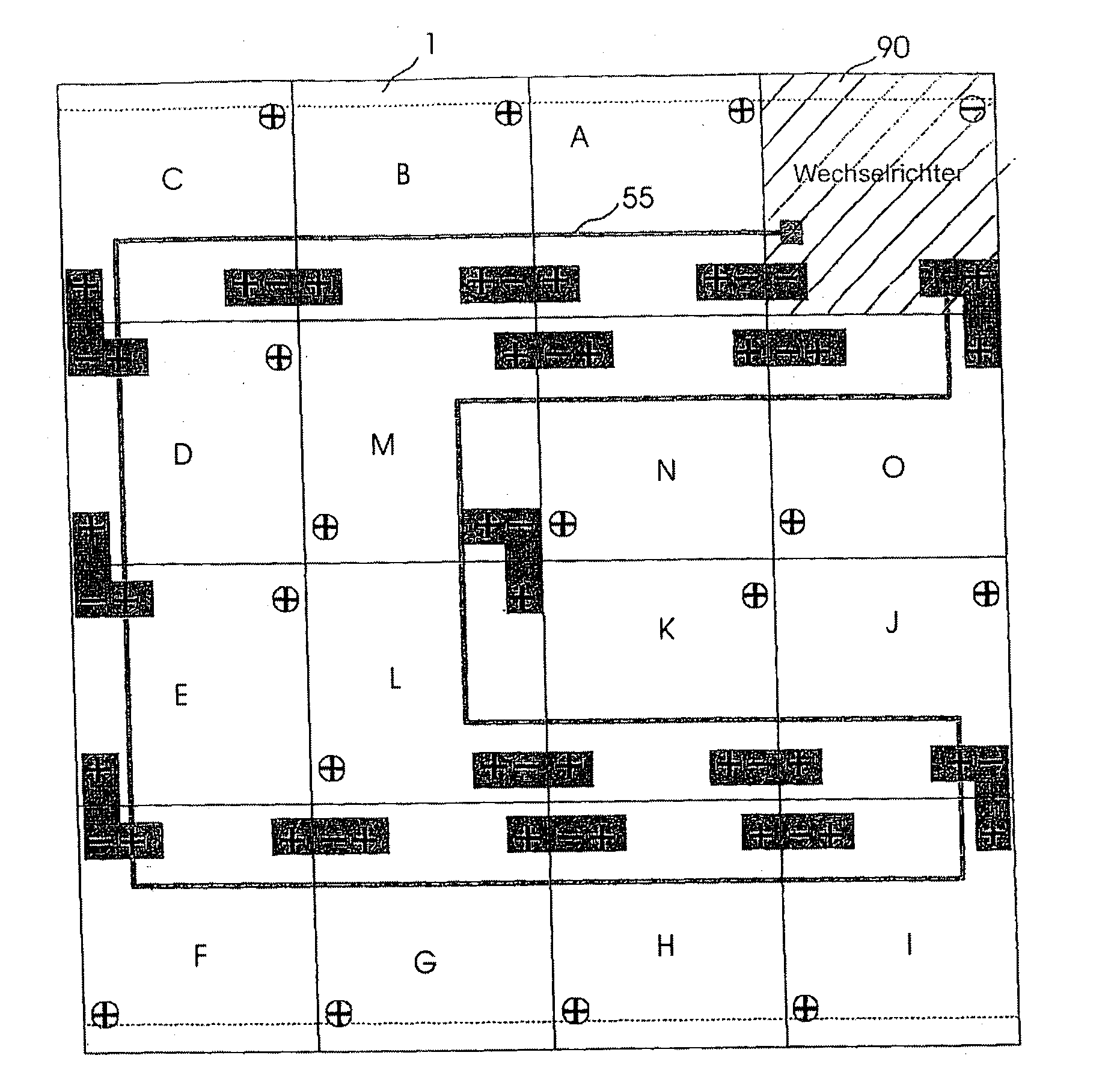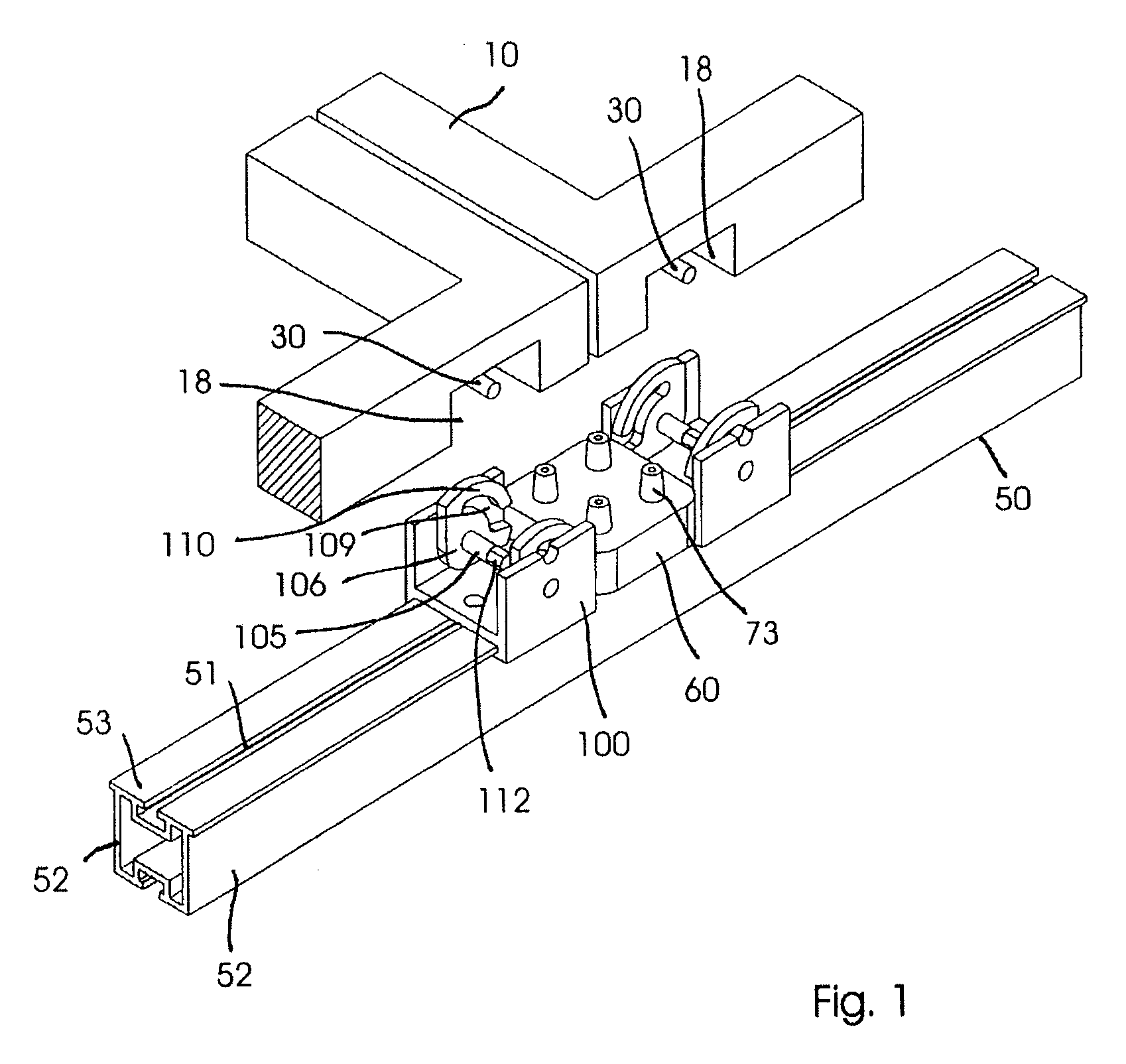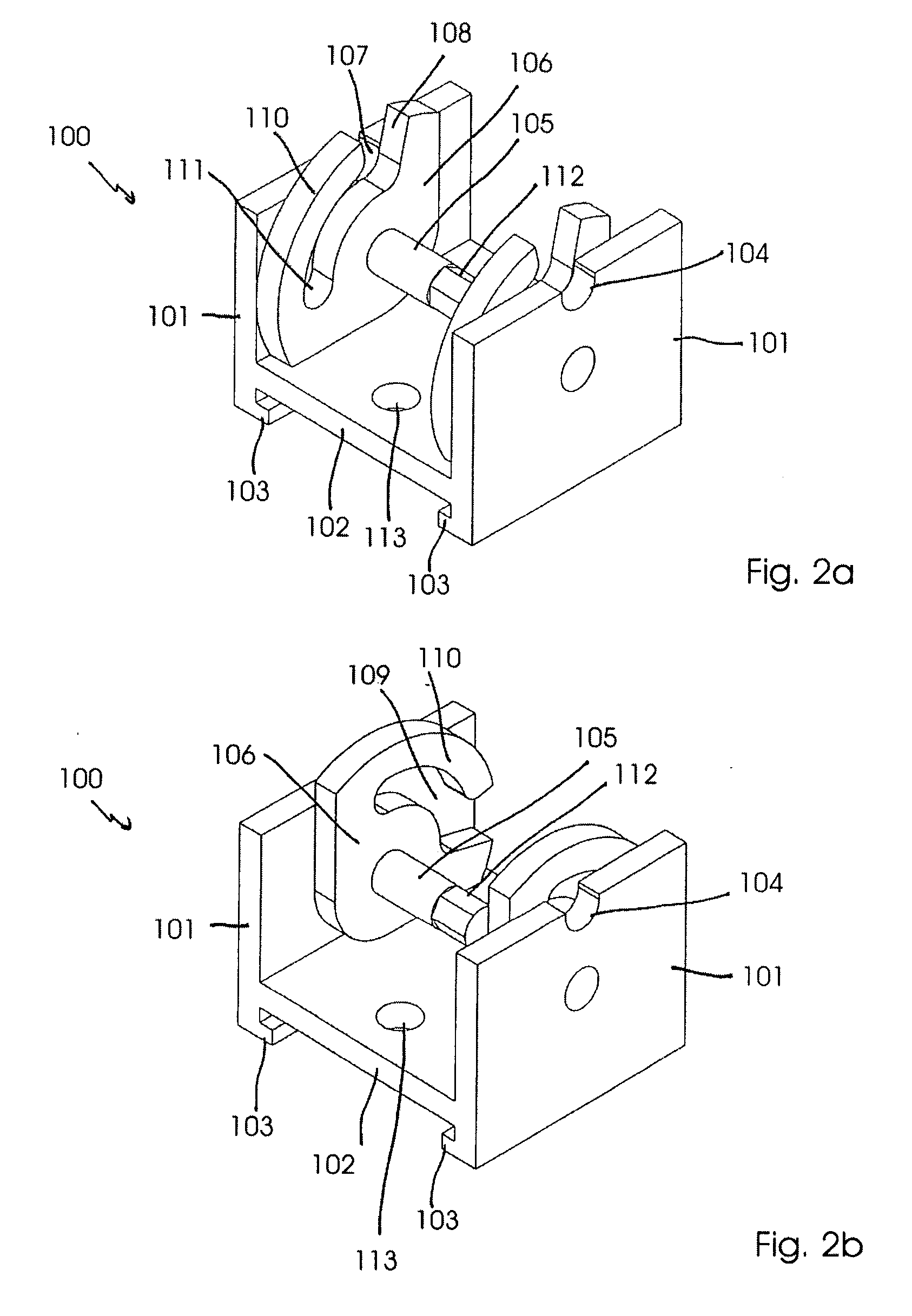Solar Power System with a Number of Photovoltaic Modules
a photovoltaic module and solar panel technology, applied in the direction of heat collector mounting/support, pv power plants, light and heating apparatus, etc., can solve the problems of difficult transmission of solar cells to mechanical connecting means, difficulty in assembly of photovoltaic modules of this kind, and relatively complex sealing of solar cells in the holding frame. , to achieve the effect of reducing photoelectric efficiency, facilitating electric contact, and operating more efficiently
- Summary
- Abstract
- Description
- Claims
- Application Information
AI Technical Summary
Benefits of technology
Problems solved by technology
Method used
Image
Examples
first embodiment
[0057]FIG. 1 shows in a perspective exploded view a detail of a solar power system according to the present invention. This comprises a plurality of parallel mounting supports 50 arranged at a distance to each other or in a frame-like manner on which are mounted holding elements 100 and double bridges 60 serving as electric connecting elements. In each case, four holding elements 100 secure a photovoltaic module by positive fitting latching or interlocking of holding studs 30 disposed in the corner regions of the holding frame, as described below. On the interlocking of the holding studs 30, contact plugs or contact sockets arranged in corner regions on the underside of the holding frame are simultaneously plugged together with the associated contact sockets or contact plugs 73 of the double bridge 60 by means of which electric contacting for the interconnection of two adjacent photovoltaic modules is achieved.
[0058]According to FIG. 1, the mounting support 50 is embodied as an endl...
second embodiment
[0069]FIG. 5 shows a mounting support embodied as an endless profile with a connecting element according to the present invention. According to FIG. 5, the mounting support 50 embodied as an endless profile is encompassed in a clamp-like manner by a connecting element 60 with a U-shaped cross section. In the middle of the connecting element 60, the two side walls 62 protruding perpendicularly from the base 63 form a central accommodating element 61 extending in the longitudinal direction for accommodating the mounting support 50 in the longitudinal direction. In assembled condition, the side walls 62 lie directly on side walls of the mounting support 50. Protruding from the side walls 62 are latching pins 65 which are prestressed inward by means of pressure springs. In assembled condition, the tips of the latching pins 65 protrude into the T-groove 51 of the associated mounting support 50 in order to latch the position of the connecting element 60 relative to the mounting support 50...
PUM
 Login to View More
Login to View More Abstract
Description
Claims
Application Information
 Login to View More
Login to View More - R&D
- Intellectual Property
- Life Sciences
- Materials
- Tech Scout
- Unparalleled Data Quality
- Higher Quality Content
- 60% Fewer Hallucinations
Browse by: Latest US Patents, China's latest patents, Technical Efficacy Thesaurus, Application Domain, Technology Topic, Popular Technical Reports.
© 2025 PatSnap. All rights reserved.Legal|Privacy policy|Modern Slavery Act Transparency Statement|Sitemap|About US| Contact US: help@patsnap.com



